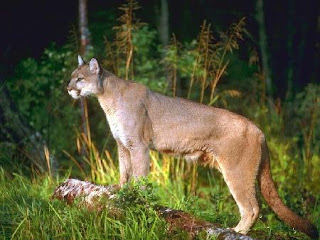THE GIST
A fungal disease is killing millions of bats and may lead to regional extinctions in the United States and Canada within 20 years.
There is no known cure for the disease, called white-nose syndrome, which kills all affected individuals.
Scientists are hopeful that research can save the bats, which eat insect pests and pollinate crops.
White-nose syndrome, an emerging fungal disease, is causing such massive die-offs of bats that some species could become regionally extinct in the United States within just two decades, according to a paper by some of the nation's leading experts on these flying mammals.
The disease, discovered only four years ago, currently affects nine species of hibernating bats in the northeastern and mid-Atlantic regions of the United States as well as in the Ontario and Quebec provinces of Canada. Up to a half million bats can die within a single cave, their thin bodies littering the floor.
"The fungus invades the dermis (skin) layer, hair follicles and sebaceous glands," said Winifred Frick, lead author of the study published in this week's issue of Science. "The immune system of bats is compromised as a consequence of the fungal infection."
There is no known cure for this disease, and all infected bats die, usually due to premature loss of fat reserves during hibernation, according to the researchers. Normally, bats rest soundly during their winter hibernation, but white-nose syndrome causes them to experience arousals and to engage in other aberrant behavior.
Frick, a Boston University post-doctoral researcher, and her team focused their study on the little brown myotis, previously one of the most common bat species in North America. The scientists looked at data from the past 30 years to establish that regional populations of this bat were healthy and thriving before the fungal disease struck. Frick and her colleagues think the disease originated in Europe and was spread via human trade or travel. "At this time, there is no evidence that bat populations in Europe are suffering declines comparable to what is happening here in North America," she said. "One possible explanation is that the fungus has been in Europe a very long time and the bats have evolved with it and are resistant, but it is too early to offer anything more than working hypotheses."
She and her team next combined the 30-year data with current information on winter mortality of the little brown myotis. Their grim conclusions reveal that the population of this bat will drop to just 1 percent of what it was before the disease came to North America. They also say it's possible white-nose syndrome could spread further west and south, killing more and more bats.
"Each of the bat species affected by white-nose syndrome are obligate insectivores -- many of which feed on insect pests of agriculture, garden crops, forests, and at times on insects that annoy or pose risks to human health," said Thomas Kunz, a Boston University biology professor, noted bat expert, and one of the co-authors. "The little brown myotis is known to consume up to 100 percent of its body weight in insects each night," he added. "This level of insect consumption provides an important ecosystem service to human kind, and to the balance of natural and human-altered ecosystems, which in turn can reduce the use of pesticides often used by humans to kill insect pests."
Kunz and the other researchers say there are many challenges now in dealing with the disease, such as not knowing precisely how it is transmitted, whether it will mutate, whether caves serve as environmental reservoirs for the fungus, and more. Nevertheless, they are hopeful that research, supported by such organizations as Bat Conservation International and the Center for Ecology and Conservation Biology, can help to eradicate the devastating disease.
While bats themselves may be suffering, they are not major carriers of disease to humans, suggests a separate study in the same journal. Many people kill bats, thinking they are dangerous, but viruses like rabies sometimes carried by bats do not easily jump to humans, due to genetic constraints.
In an accompanying "Perspectives" commentary within the journal, Peter Daszak, president of EcoHealth Alliance, wrote, "The two studies demonstrate the value and importance of monitoring wildlife diseases, which can have major impacts on both human health and ecosystems."
Discovery News
By Jennifer Viegas
August 5, 2010

























































